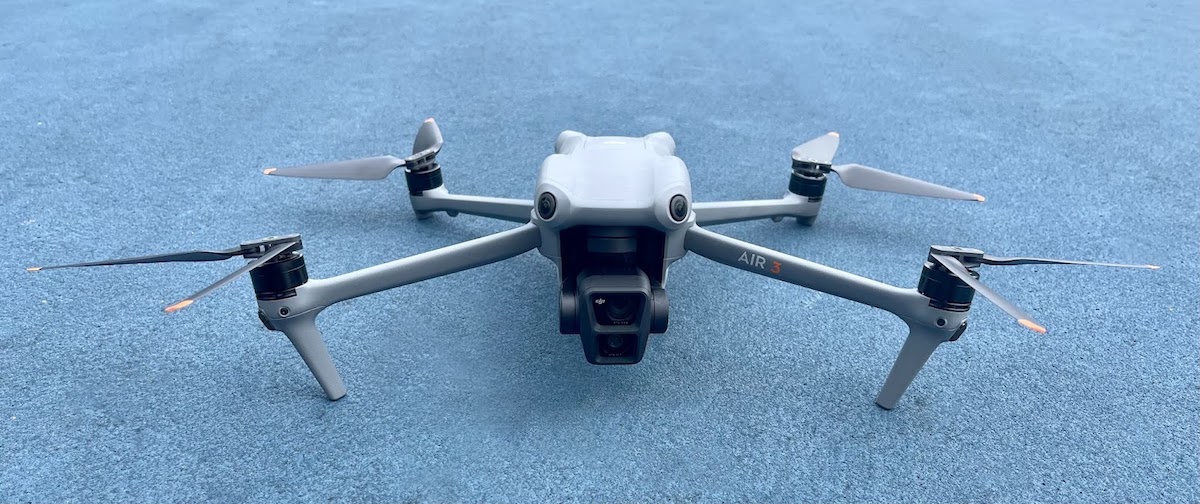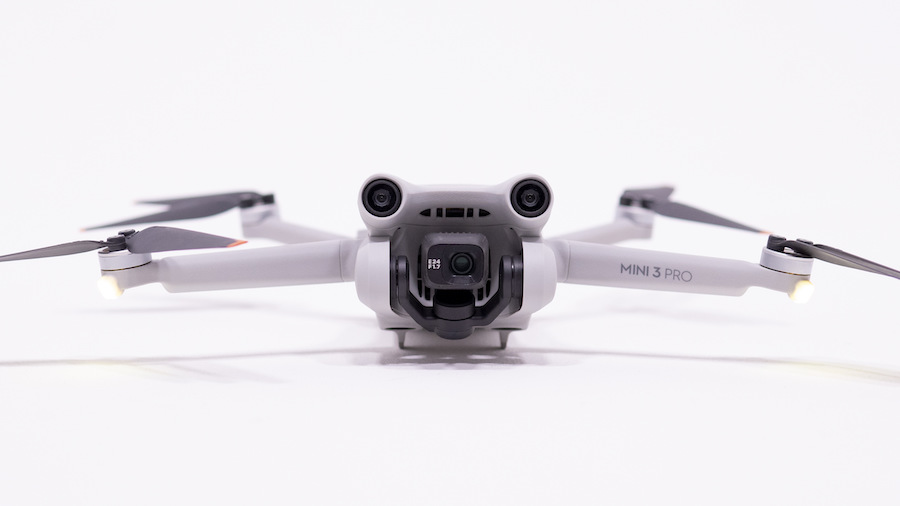-
What is a Part 107 waiver?
-
What are the provisions for which a waiver can be granted?
-
How to apply for a Part 107 waiver
- 1. Description of Proposed Operation
- 2. Description of Operational Risks and Mitigations
-
Tips on getting your waiver application approved
- 1. Know the regulations like the back of your hand
- 2. Plan for everything
- 3. Be realistic
- 4. Avoid copying what others have done
- 5. Make yourself available for contact
-
How many and what types of waivers has the FAA granted?
-
Proposed changes to the scope of Part 107 waivers
-
Final thoughts
When the Part 107 rules were implemented by the FAA, drone pilots suddenly found themselves under an unprecedented level of regulation. The rules mostly affected drone pilots who offered their services commercially, as they now cannot do what they do without securing a drone license. Moreover, Part 107 enforced several conditions in which drone pilots are now prohibited to fly.
However, part of the mandate of the FAA is to make sure that the growth of the commercial drone industry is not impeded. To this end, the FAA has a provision under Part 107 where they can grant waivers for some of its flight restrictions. How does a drone pilot get a waiver? Has the FAA been generous in handing these waivers out?
What is a Part 107 waiver?
The waiver section of Part 107 provides what the FAA calls “regulatory flexibility” – an opportunity for commercial drone pilots to operate outside of what Part 107 normally allows, but still in a safe and legal manner. The FAA recognizes the dynamic and unpredictable nature of commercial drone work and seeks to work with their licensed drone pilots to ensure that they can still do their jobs within established safety and regulatory guidelines.
All Part 107-licensed drone pilots can file for a waiver request. The restrictions for which waivers can be granted is limited, as listed in Section 107.205. However, the FAA is currently in a process of reviewing waiver requirements and the list of restrictions that can be waived, so we might see some changes in about a year’s time.
Granting of a waiver request is entirely upon the discretion of the FAA. A drone pilot must demonstrate a thorough understanding of the risks involved in flying drones outside of approved Part 107 restrictions and must be able to implement actions to mitigate these risks. These mitigating circumstances may vary from case to case. The FAA also imposes very strict guidelines when they grant waivers to make sure that drone operations will proceed only within the scope of risk managed by the mitigating measures.
What are the provisions for which a waiver can be granted?
The following are the regulations for which licensed drone pilots can request for waivers:
- 25 – Operation from a moving vehicle, boat, or aircraft
- 29 – Operations only at daylight or twilight
- 31 – Operations within visual line-of-sight
- 33 – Visual observer
- 35 – Operation of multiple small unmanned aircraft systems by a single pilot
- 37 (a) – Yielding the right of way to manned aircraft
- 41 – Operation in certain airspace
- 51 – Operating limitations for small unmanned aircraft*
*There are other sub-provisions within this section, including flight at more than 400 feet altitude, faster than 100 mph ground speed, in visibility of less than 3 state miles, within 500 feet below clouds, and 200 feet horizontally of clouds.
How to apply for a Part 107 waiver
Before you apply for a Part 107 waiver, you must know that the FAA prescribes a lead time of 90 days between the filing and approval of a waiver application. This is a massive consideration that you need to make if you’re accepting a job that requires a waiver. Not only do you need to deal with added paperwork, but you’ll also have to do quite a bit of planning. Most commercial drone pilots will charge a premium if a waiver needs to be filed to do the job.
The second thing to know is that this is going to be a long and tedious process with lots of forms to fill out and pages of explanation to write.
To start off, you’ll need to identify which specific regulation you’re trying to get a waiver for. It’s also possible for some drone operations to need waivers for multiple regulations, in which case the drone operator will have to apply for multiple waivers separately.
The waiver application is done via the FAA DroneZone portal. Create an account or sign-in to your existing account and select the option to “Fly an sUAS under Part 107.” This is the same link used for drone registration but simply click the option to apply for a waiver. You do not need a registered drone to complete a waiver application.
Right now, airspace waivers practically are no longer a thing because of the LAANC system. All waiver requests that are not airspace-related fall under the category of operational waivers.
The first page of the application will require you to provide an Operation Title, which is simply a working title for your application and identify a Responsible Party. The Responsible Party may be the remote pilot-in-charge but can also be a person representing the organization conducting the operations. However, the Responsible Party is the sole person in charge of ensuring that operations will commence safely and must have an ongoing knowledge of UAS operations.
The Responsible Party will need to provide a mailing address and phone number. The FAA may get in touch with the Responsible Party should they need clarifications about the waiver application. You will then need to provide the identity of the remote pilot-in-command and their Part 107 certificate number.
At this point, you will be prompted to fill out the Waiver Safety Explanation online form. Here are our tips for helping you fill out the individual sections:
1. Description of Proposed Operation
The first section to fill out requires you to give a detailed description of the drone operations that you’d like to do. Before you go to the details, tackle the basics first. Describe the location of your operations via latitude and longitude and provide a detailed map with a defined border. It would also help if you can do a bit of research and indicate the population density in the area and if you’re within or near controlled airspace. You also need to specify an altitude ceiling for your proposed operations.
Next, provide the technical details of the drone that you will be using. This should include the model of your drone, the weight and size, when it was purchased, and the rated maximum flight time, speed, and range. Include any relevant accessories which can enhance the safety of your operations, such as any obstacle avoidance systems, anti-collision lights, or external GPS accessories for retrieval.
Lastly, you need to describe the remote pilot-in-command’s level of skill and experience. State how long they have been flying drones, any training courses they have taken, or if they have operated drones in similar conditions before. You may have several remote PICs under one waiver.
2. Description of Operational Risks and Mitigations
This is the part where different waiver applications can vary largely because you need to address the specific risks that your operations will encounter. How well you can identify these risks will be a big factor in determining whether or not your waiver application will be granted. Aside from the risks, you will also need to provide measures, both pre-emptive and reactive, to address them.
There is no single way to do this section, but the FAA has helpfully prepared a list of guide questions that you’ll need to answer for each of the Part 107 regulations that can be waived. We recommend that you make sure that every single question for the relevant is regulation is covered in your application. For instance, if you want to fly your drone over a populated area, you will need to provide evidence that your drone cannot cause serious injury to a person if it crashes.
After submitting the application, you can start the count for the 90-day turnover period. Based on the experience of several drone pilots, it usually doesn’t take the maximum 90 days for a waiver to be approved. To help hasten the process, make sure that the FAA can easily get in touch with you should they need details additional to what you’ve already provided.
In any case, it will be prudent to plan for the whole 90 days if you’re preparing for a drone job. The FAA makes no guarantee that your application will be approved, so it would also be a good idea to have a back-up plan in case yours is denied.
Tips on getting your waiver application approved
With all of the time and effort spent in crafting a waiver application, it would be absolutely heartbreaking to receive a rejection. There’s also the fact that you could lose out on a high-paying gig id you fail to get your waiver application approved.
The ability to make a good application is a valuable skill. Some commercial drone pilots even indicate the number of waivers that have been granted to them as a way to spruce up their credentials. To help you get that waiver approved, here are our tips:
1. Know the regulations like the back of your hand
This should be a given for all Part 108-licensed drone pilots, but it would be a huge advantage if you have a deep understanding of the Part 107 regulations relevant to your waiver application. Make sure that you’ve covered all the necessary regulations for your planned operations to proceed. It would be devastating to wait several weeks only to find out that there’s one more waiver that you need to apply for.
2. Plan for everything
Anticipating the risks and making plans to address them is the key skill in getting an approved waiver. This has to be done in the context of your proposed operations, the drone you are using, and the level of skill of your remote PIC. As such, there’s no single answer that we can give you. If you’re still struggling with this aspect of the process, then it would be best to ask for advice from more experienced drone pilots to whom you can accurately explain the situation.
3. Be realistic
In coming up with mitigating measures, make sure that you can actually implement these measures and that they are suitable for the risks you are addressing. You may have to use a parachute system for flying over crowds, but do you have the budget for the added equipment? If you’re proposing drone operations at night, are you certain that the anti-collision lights you’ve installed will remain visible at the maximum 2-mile range you want to fly in?
4. Avoid copying what others have done
Looking at approved waivers of scenarios similar to yours is great research for coming up with measures to address your risks, but it’s also important to demonstrate that you can come up with your own ideas. This comes down to critical thinking – how can you react to a problem without having to look at what other people have done?
5. Make yourself available for contact
Again, the best way to make sure that your waiver is approved as soon as possible (aside from making a good application) is to make yourself available to the FAA in case they need to get in touch with you.
How many and what types of waivers has the FAA granted?
According to the FAA website, they have granted more than 3600 waivers as of January 2020. Since airspace approval is no longer done via waivers, the FAA no longer lists the previously granted waivers Section 107.41. More than a hundred of these waivers were granted for multiple flight restrictions.
A huge portion of the waivers, or around 95%, were granted for Section 107.29, or drone flight at night. This has been a prevailing trend ever since the FAA started accepting Part 107 waivers. Its dominance over all other waiver types has become even more pronounced with the de-listing of waivers granted for access to controlled airspace.
The second most common type of waiver granted has been for drone flight over populated areas. With 98 waivers approved, this accounts for just a little more than 2% of the total number. What we find to be more interesting when it comes to this waiver type is that all but nine of them have been granted from 2018 to 2020. This is either reflective of the FAA relaxing their stance on this particular restriction or the availability of technology that makes drone flight over people a little safer.
Drone flight over multiple people, without a visual observer, beyond visual line of sight, and beyond the usual operational limits each account for a little more than 1% of the total waivers granted. Again, looking at each one of these waiver classes makes it apparent that the FAA has been more generous in granting them starting 2018.
At last place is drone flight from a moving vehicle, with a grand total of only four waives granted.
Take note that we have no idea how many waiver applications were received by the FAA, so we can’t even come up with an educated guess of the percentage of the waivers that the FAA approves. The bloating of the numbers in years 2018 and 2019 may even be ascribed to an increase in the waivers that the FAA has received.
Proposed changes to the scope of Part 107 waivers
With more than 3400 waivers approved for night flight, it’s quite apparent that being able to fly drones outside of the daytime limits is very valuable for commercial drone pilots. It’s also easy to see why – there are photography and filmmaking opportunities that are only available at night, and you may also need to do an aerial survey that can take the better part of a day to finish.
Flight over populated areas, although much less significant than flight at night, still represents a large number of waivers that the FAA has approved. As drone flight has become more mainstream, more and more commercial and industrial uses of drones require them to fly over people.
The FAA reacted to these findings by releasing a notice of proposed rulemaking (NPRM) back in January 2019. Among the proposed changes were to allow for drone flight over people and at night without having to request for a waiver. Naturally, there were pre-conditions before such widespread approval can be granted.
In the case of drone flight at night, the FAA proposed that anti-collision lights be required to maintain visibility up to three statute miles and that the Part 107 knowledge test has an added focus on “night physiology and night illusions.”
The conditions for allowing flight over people are a bit more complicated. According to the proposal, drones have to be classified into three categories according to their weights and to how severe a personal injury they can cause should they crash. The good thing is that the responsibility of providing evidence that drones fall into any of these categories falls to the drone manufacturer. This means that drone manufacturers have to provide a testing system to exhibit their compliance with the new standards.
Moreover, the FAA is deliberating the addition of three restrictions for which waivers can be granted upon request. The three conditions are as follows:
- Operations over moving vehicles
- Operations at night without anti-collision lighting
- Operations over people that otherwise do not comply with the proposed new rule
The corresponding conditions for which any of these waivers could be granted have not yet been disclosed.
The NPRM was added to the Federal Register on February 13, 2019, after which it had a 60-day window for public feedback. The FAA presumably went through all the comments before reviewing and revising the proposals. Several months have passed since then, but we have not received any updates yet on this matter. When will the changes take effect? Only the FAA knows at this point.
Final thoughts
The provision that allows for waivers under Part 107 was a great exercise of forethought on the part of the FAA. They knew that there would be certain times when commercial drone operators had to “color outside the lines.” Instead of forcing them to do it illegally, the FAA gave them an avenue to do such activities in a legal and safe manner.
The process for securing a waiver may seem long and tedious, but it does get easier the more you do it. The lead-time, however, is still atrocious and unpredictable, so it’s best to prepare for the worst. Our advice for commercial drone pilots is to keep on taking those difficult jobs and preparing those waivers – it is through all this adversity that you get to learn faster and build up a more valuable skill set.
Contents



